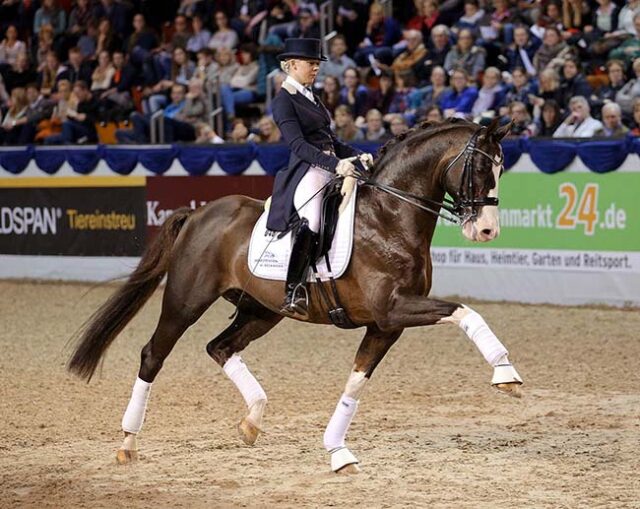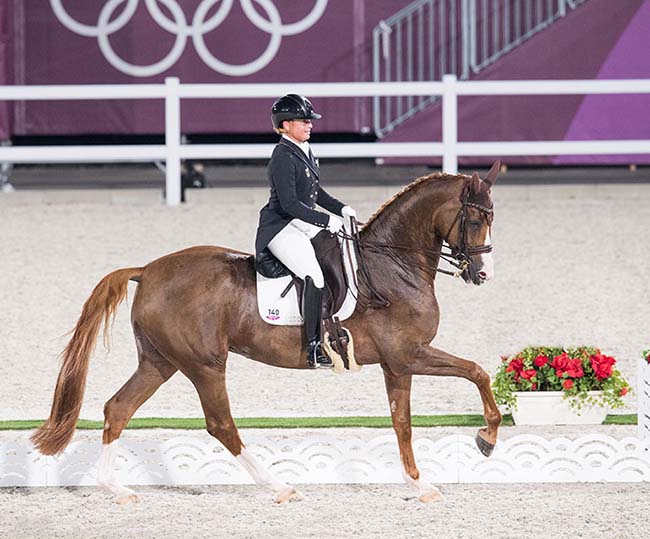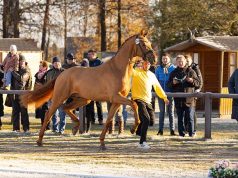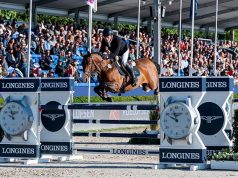
By Christopher Hector
Photography: Courtesy Callaho Studfarm and FEI/Shannon Brinkman
After some years in the wilderness, the B line, founded by Bolero, has returned to Hanover with a vengeance. At the most recent Hanoveraner Verband stallion licensing, no fewer than nine of the 65 colts up for selection were by B line stallions.
The acceptance into the stallion ranks at the State Stud Celle in 1979 of founding father of the B line, Bolero, marked a significant break-through in the development of the modern dressage horse. For starters, stud director, Dr Burchard Bade had to ‘break’ the rules to bring him into the fold. His breeding was officially prohibited by the Hanoverian Stud Book regulations of the time, which regulated against the breeding of a mare by a Thoroughbred to a Thoroughbred stallion.
Born in 1975, Bolero was by the elegant English Thoroughbred, Black Sky xx, imported to Germany in 1972 out of Baroness [Hann], by another English Thoroughbred, Bleep xx. Despite this he was allowed to breed and stood for nine seasons at stallion station Landesbrück from 1979 until his death from heart failure in 1987 at the age of 12. At this time breeding was much more local, without chilled semen, so the stallion covered only the mares from his own district, but Bolero was lucky he clicked with the concentration of daughters of Grande and Duellant in the area.
Right from the start, the hunt was on for a stallion son. Bolero sired 47 licensed stallions, including the champion of his year, Buenos Aires (out of Annette x Argentan I), but most disappeared without trace. His most influential stallion sons have been Brentano II (Grande) and Bismarck (Maat I).
Bolero’s Thoroughbred blood contributed to the elegant quality of his descendants. This was important as the emerging and lucrative market of largely female dressage riders demanded a horse that was more refined and easier to ride. Plus it helped if the horse was pretty.
It was only some years later, thanks to the researches of Florian Sitzenstock from the University of Goettingen that the link between Thoroughbred blood and dressage talent was decisively proven, though canny breeders sensed that much earlier.
Sitzenstock examined the pedigrees of a total of 217,475 Hanoverian foals from 1980 until 2006 and found that the average proportion of Thoroughbred blood in the foals was 23%, with an increase from 20% in 1980 to 25% in 2006. During that period, the percentage of horses with no Thoroughbred blood, dropped from 40% to 4%!

Improving Hanoverian conformation
The Thoroughbred has been very important in improving conformation in Hanover, with values positively influenced by Thoroughbred blood up to a proportion of 62.5%. The Hanoverian values show a positive Thoroughbred influence for frame, saddle position, and type while the front legs especially benefitted. Crossbreeding with a Thoroughbred in the first two generations positively affected the breed value for dressage and both exterior breed values... To read the complete article you need to be a subscriber
CLICK HERE TO SUBSCRIBE TO BREEDING NEWS
SUBSCRIBERS CAN READ THE COMPLETE ARTICLE BY LOGGING IN AND RETURNING TO THIS PAGE



